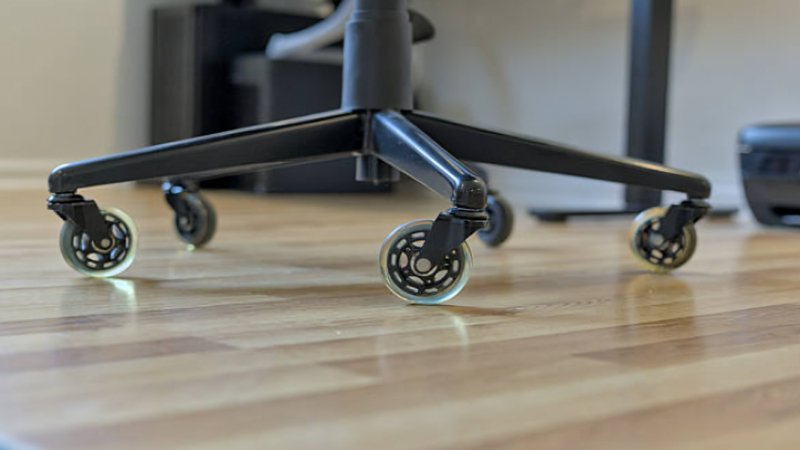When rolling equipment and furniture on 4-inch casters indoors, unwanted noise can disrupt the ambiance and efficiency of workspaces such as offices, hospitals, schools, and libraries. The right approach to reducing caster wheel noise can make a profound difference in your space’s overall comfort and day-to-day productivity.
One of the simplest upgrades you can make is choosing higher-quality casters. Trusted brands like Hamilton Casters offer diverse solutions emphasizing quiet operation and smooth mobility. A few targeted steps can help create a quieter indoor environment for employees, patients, and guests.
Noise from casters is not only distracting—over time, it can even contribute to elevated stress levels in busy environments. Whether moving office chairs, hospital beds, or heavy shelving, selecting and maintaining the best casters can be essential in containing and minimizing ambient noise.
Let’s explore practical tips to keep your space peaceful and ensure your rolling equipment isn’t the source of unnecessary clatter.
Choose Soft Wheel Materials
Changing the material of your caster wheel is often the first line of defense against disruptive rolling noises. Hard wheels—such as those made of steel or hard plastics—produce more noise and transmit vibrations directly into the flooring. Instead, opt for casters made of soft rubber or polyurethane.
Thermoplastic rubber (TPR) is a standout choice, blending plastic’s resilience with rubber’s cushioning benefits. These materials absorb impacts, provide quieter operation, and offer better traction, reducing the rolling noise significantly compared to rigid wheels. Polyurethane wheels are equally effective for areas where durability and heavy load capacity matter, but noise is still a concern.
Utilize Precision Bearings
The internal components of the caster are just as important as the wheel material. Precision bearings, particularly those sealed and protected from dust and debris, ensure smoother and quieter rolling.
Sealed bearings minimize metal-on-metal contact and friction, helping each movement stay fluid and nearly soundless. Over time, their use preserves the caster’s life and maintains a tranquil atmosphere, even as equipment is frequently moved.
Implement Shock-Absorbing Designs
Many modern caster wheels incorporate built-in shock absorbers or tread patterns that distribute weight more evenly. Casters with shock-absorbing technology can help minimize the jangling noises that result from rolling over small floor imperfections or transitions between hard and soft surfaces.
By selecting models designed to cushion each bump and jostle, you achieve quieter operation and better protection for both floors and transported items. Learn more about the science of quiet spaces and the impact of vibrations in indoor public environments through authoritative resources such as ScienceDirect.
Regular Maintenance and Lubrication
Even the best caster wheels can become squeaky if neglected. Dust, hair, and other debris accumulate on wheels and bearings, increasing friction and intensifying noise. Establish a maintenance routine that regularly removes buildup and lubricates all moving parts with silicone or light machine oil.
Lubrication ensures smooth movement and protects bearings from wearing down—the quieter caster is ultimately the one that’s cared for. A well-maintained track reduces resistance and puts less strain on the flooring.
Install Anti-Noise Strips
In addition to changing wheels and bearings, adding anti-noise strips—also known as thread guards—can lower noise levels. These strips act as buffers, absorbing impact and dampening vibrations as the wheel turns or changes direction unexpectedly.
Installing anti-noise accessories is straightforward and cost-effective, and can significantly improve indoor noise control, particularly in environments that require a quiet, focused atmosphere.
Replace Worn or Damaged Casters
Casters experience regular wear and tear, especially in high-traffic areas. Flat spots, chips, or cracked tread surfaces can dramatically increase noise. Regular inspections help detect these issues before they result in persistent sound problems or costly flooring damage.
When you promptly replace broken or worn-out casters, you maintain a quieter, safer space for everyone. Routine replacement is especially important in hospitals, warehouses, and educational settings, where uninterrupted mobility is critical.
Consider Larger Wheel Diameters
Larger caster wheels typically offer smoother movement across floors and reduce the impact of minor obstacles and seams. Although 4-inch casters are common indoors, consider choosing a slightly bigger wheel size if the equipment or furniture design allows.
The greater surface area helps distribute weight more evenly, overcome obstructions more efficiently, and reduce both rolling resistance and resulting noise.
Evaluate Flooring Compatibility
The noise generated by caster wheels isn’t only about the wheel itself—flooring material plays a starring role, too. Hard surfaces like tile or laminate amplify sounds, while carpets and soft vinyl can help muffle them.
When feasible, combine low-noise casters with suitable flooring to achieve the quietest operation possible. Matching the right wheel to the right floor type is a practical step that many facilities overlook, but it can yield noticeable results.
Final Thoughts
Minimizing noise caused by 4-inch caster wheels indoors requires thoughtful equipment choices, routine maintenance, and attention to both the wheel and floor materials.
By utilizing soft, shock-absorbing wheels, precision bearings, and anti-noise accessories, keeping casters clean, and promptly replacing worn components, you can foster an environment that promotes concentration, comfort, and productivity.
Matching the proper caster and flooring combination ultimately delivers a quieter and more efficient space in offices, hospitals, or learning environments.
Key Takeaways
- Choose soft, shock-absorbing wheel materials to dampen vibrations and lower rolling noise.
- Precision bearings, regular maintenance, and anti-noise accessories are critical to a quieter environment.
- Proper floor compatibility and caster inspection minimize disruptions, promoting productivity and comfort indoors.
